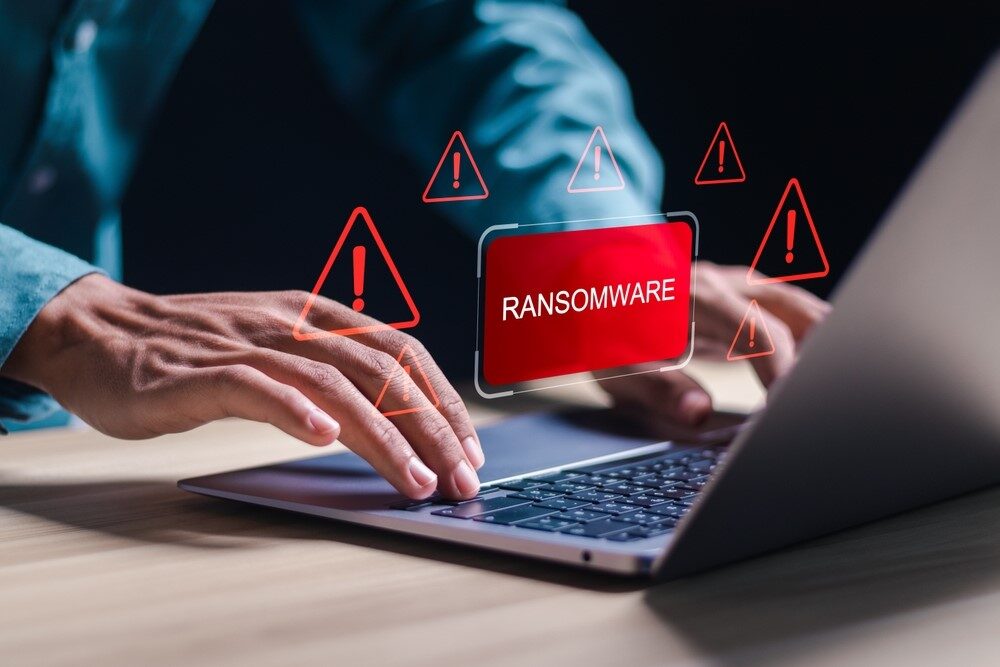Phishing in the Metaverse: New Risks and Mitigation Strategies
The future of technology is truly promising, with artificial intelligence, robotics, quantum computing, augmented/virtual reality, and IoT standing out as just a glimpse of the significant advancements poised to transform the world in the foreseeable future.
Among these advancements, the metaverse emerges as a particularly thrilling prospect—a virtual space where people can interact and participate in diverse activities such as concerts, video games, and workspaces. While the metaverse holds the promise of spawning unprecedented markets and industries, it also introduces its own array of risks and challenges, but one looming peril stands out — phishing. This insidious online fraud involves scammers masquerading as reputable brands or businesses to deceive users, be they customers, employees, or partners, into divulging sensitive information. The current wave of phishing scams exhibits an unprecedented level of sophistication.
The metaverse becomes a breeding ground for cyber deception, with malevolent actors skilfully replicating authentic brands, infiltrating prominent platforms like Decentraland and Sandbox. Investors, drawn by the allure of virtual property, find themselves ensnared in a web of deceit, falling prey to counterfeit sites posing as trusted allies.
Decentraland’s Phishing Saga
Cyber Deception Amplified
The narrative unfolds in Decentraland, a popular Ethereum-based virtual world, where scammers orchestrate an elaborate phishing scam. Crafting counterfeit websites mirroring the Decentraland interface, these tricksters dupe users into disclosing private keys, providing the gateway for the illicit pilfering of cryptocurrency.
A Deceptive Alchemy
Metaverse malefactors employ a sophisticated medley of phishing tactics, encompassing look-alike domains, brand impersonation, fake apps, and more. In a domain characterized by fewer regulations and less familiarity, both customers and brands find themselves vulnerable to these digital stratagems.
A Call to Vigilance
As the metaverse undergoes unprecedented growth, the spectre of phishing scams looms larger. Brands stand at the precipice, urged to recognize imminent risks, and fortify their defences. Vigilance and proactive measures are imperative to navigate the evolving metaverse, ensuring a secure digital frontier for all.
Exploring the Metaverse as a Prone Target
What prompts the shift of cyber criminals toward the metaverse?
One contributing factor is that the metaverse introduces a heightened level of connectivity not found in other digital channels, making it an appealing focus for cybercriminals. Having gathered substantial
valuable data from users in various channels, cybercriminals can leverage this information to craft more convincing phishing schemes within the metaverse.
The user base of metaverse platforms already comprises millions and is poised to expand further. Concurrently, numerous brands are navigating the metaverse ecosystem to enhance their business strategies. This scenario creates an extensive pool of potential targets for phishing attempts. As businesses increasingly integrate into the metaverse, scammers gain additional opportunities to exploit brands, particularly those active on social media but less acquainted with the emerging technology’s risks.
Navigating Risks in the Metaverse: A Concise Overview

Courtesy: (https://blog.cloudflare.com/ja-jp/2023-phishing-report)
Here’s a condensed exploration of key threats
1. System Outages and Disruptions
Metaverse platforms, due to data volume, face disruptions.
Malicious actors may exploit this vulnerability, urging user vigilance.
2. Mental Health Impacts
Prolonged screen exposure and metaverse engagement can affect mental health.
Disrupted sleep patterns may influence real-world behaviour, impacting work and relationships.
3. Threats from Bots
Automated bots pose a significant threat, causing spam, DDoS attacks, or account takeover.
Limited regulations on metaverse platforms hinder effective response to these bots.
4. Regulatory Gaps
Metaverse lacks clear regulatory frameworks, creating challenges in legal compliance.
Legal implications of virtual currencies, digital property, and user-generated content remain unclear.
5. Virtual Currencies and Fraud
Risks associated with virtual currency use, including financial loss and susceptibility to scams.
Lack of regulations increases vulnerability compared to traditional currencies.
6. Ransomware Attacks
Metaverse profiles, rich in data, are susceptible to ransomware attacks.
Hackers exploit encrypted data, demanding payment for data restoration.
7. Unauthorized Data Collection
Metaverse collects user data, raising concerns about unauthorized use for advertising or resale.
Decentralized nature challenges consent and independent verification.
8. Harassment, Cyberbullying, and Child Safety
Cyberbullying and explicit content pose threats, especially to young users.
Safeguarding users, particularly children, gains prominence.
9. Identity Theft
Decentralized metaverse structure facilitates identity theft.
Addressing these challenges necessitates proactive measures, combining technological advancements with user awareness and regulatory frameworks. User authentication, biometric verification, multi-factor authentication, and blockchain integration are crucial for prevention.
Strategies and Safeguards
Amidst Facebook’s transformation into Meta, awareness of the metaverse has surged. Yet, many remain oblivious to its decades-long existence, providing hackers with an extensive window to understand its nuances.
Innovative Approaches to Boost Brand Security
Pioneering inventive strategies, Alliance PRO leverages its services to enhance brand security on new social media platforms and digital interfaces. Despite cybercriminals targeting novel platforms, our methodologies share similarities with established tactics.
Diverse Exploitation Techniques
Beyond brand impersonation, cybercriminals employ various strategies to exploit users. Posting about brands, products, or services on social platforms allows them to engage their audience, enticing some to click on links or download files. These links may serve as conduits for spreading malware or engaging in malicious activities like payment collection and personal information theft.
The Proliferation of Fake News
Cybercriminals leverage the metaverse and social media to propagate fake news, creating deceptive accounts to disseminate false or misleading information about a brand. Executive impersonation phishing scams further target employees, prospective hires, and customers, causing reputational damage and financial losses.
Collaborative Cybercrime and Automated Tools
Operating collectively, cybercriminals frequently employ automated tools, posing a challenge for social media platforms in identifying and removing malicious content. Alliance PRO’s industry-leading automated brand protection services prove invaluable in combating these evolving threats.
Phishing-as-a-Service (PHaaS)
After dismantling a ‘phishing-as-a-service‘ operation impacting thousands globally, INTERPOL emphasized the tangible and devastating consequences of cyberattacks like phishing. Business email compromise (BEC), an impactful malware-less attack tricking victims into fund transfers, has incurred over $50 billion in global losses, as reported by the FBI.
Phishing-as-a-service operates on a software-as-a-service framework, offering a phishing kit (comprising phishing pages, counterfeit websites, etc.) for a fee. In this model, cybercriminals function as service providers, granting access to the tools and expertise essential for executing a phishing attack.
Traditionally, launching a phishing campaign demands a diverse skill set. However, Phishing-as-a-Service empowers even individuals with limited expertise to carry out such attacks.
Mitigating the Impact of Phishing Scams
Approximately 90% of successful cyber-attacks originate from email phishing, an avenue that remains highly profitable for attackers. While preventing phishing attempts entirely is challenging, understanding, and proactively addressing evolving phishing trends is crucial to thwart successful attacks.
How to Safeguard Your Company Against Phishing Threats in the Metaverse?
While we acknowledge a preliminary comprehension of metaverse-related security risks, the full spectrum of threats is yet to be exposed. It is crucial for companies to take proactive measures and assess the risks associated with phishing scams. Your organization, with the support of Alliance PRO, can implement effective security measures to safeguard both employees and customers, providing a concrete Défense against potential threats.
To protect against phishing scams, your company can undertake several key actions
· Educate employees and customers about the dangers of phishing.
· Implement security protocols to shield both employees and customers from phishing scams.
· Utilize social media protection solutions to detect and obstruct phishing content.
· Regularly update security measures to stay abreast of the latest scams.
· Report any instances of phishing attempts to the relevant authorities.
Fortify Your Business Against Phishing
Defending against phishing scams demands vigilant adoption of these best practices, ensuring ongoing updates to combat evolving threats. Given the escalating risk, companies, irrespective of size, must proactively shield themselves from potential harm.
Empower Your Défense with Alliance PRO
Brands leveraging social media platforms such as Reddit, Facebook, Instagram, entrust their security to Alliance PRO for threat detection. Our continuous monitoring technology assures the identification of social media phishing threats, offering a protective shield, even without dedicated internal resources.
Explore Alliance PRO’s Innovative Solutions
Discover how Alliance PRO consistently evolves its solutions to align with digital trends, safeguarding brands, and customers from internet threats. To witness our capabilities, request a 30-minute demo through our “Request a Demo” form. Arm your business with the expertise of Alliance PRO in the dynamic field of online security today.






















